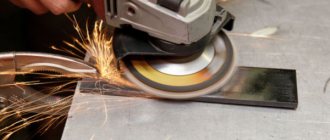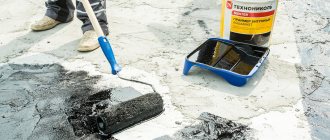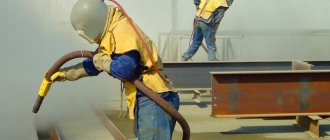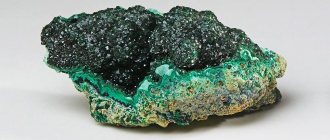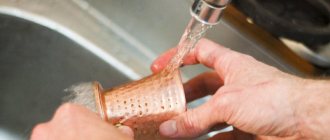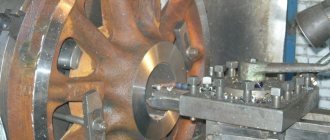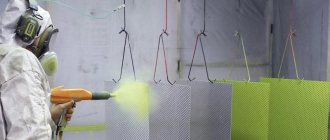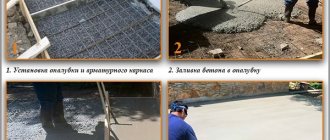A directed jet allows you to easily remove from the surface almost all types of contaminants of any chemical composition:
- pyrophoric compounds,
- paint coatings,
- scale,
- rust,
- soot,
- resins,
- bitumen,
- lignosulfonates, etc.
To remove difficult stains, the use of surfactants is acceptable. In this case, after treatment it is necessary to rinse the surface with clean fresh water.
Why is this necessary?
Any building, and especially a residential building, must have a neat (albeit not perfect) appearance in order to impress the visitor. But despite all the careful treatment of the facade, over the time that has passed since the construction of the building, the walls become dirty and lose their attractiveness. This is especially noticeable in buildings located within the city limits, along highways, near industrial enterprises.
Facade washing
Natural factors also have an impact on the facade - snow, rain, heat. Even the wind, which sometimes carries soot from nearby garages that are heated by stoves, can do bad things. The ash particles brought by it will easily settle on the surface of a plastered, concrete or brick wall. Even plant pollen during the flowering period can settle on the surface of the facade, ruining its appearance.
Facade before and after cleaning
Washing the facade of a multi-storey building
Facade washing is equally necessary for administrative, residential and even industrial buildings. Especially in the modern world, when more attention is paid to the wrapper than to the internal contents.
Façade finishing with clinker tiles
Washing the brick facade
Often, due to its unattractive appearance, the owner cannot sell for years even a house that is excellent inside and of good quality, and the first impression of the company will always be based on the appearance of the building where it is located. Also, the facade must be cleaned before you begin to restore or refinish it. And if this procedure is not necessary to cover the walls with siding, then you still need to wash the walls before painting or applying a fresh layer of plaster.
Cleaning a brick wall from paint and varnish with sandblasting
Facade cleaning services are not cheap, and this is justified when you need to wash a high-rise building. But it’s much cheaper to tidy up a one- and even two-story private house yourself, saving a lot of money.
The services of specialists are not cheap, so it is advisable to clean a private house yourself
Peculiarities
Sometimes this method is called waterjet processing. The work is carried out using special devices. A jet of water under high pressure thoroughly cleanses all deposits. Special hydrodynamic nozzles allow the process to be carried out on any surface and even pipelines. Compared to other methods, this has clear advantages:
- Removes deposits with various physical and chemical properties, even in hard-to-reach places.
- Does not cause damage.
- It is highly environmentally friendly.
- There is no air pollution during operation and no dust is generated.
This method is an effective modern type that allows you to clean buildings, various structures, cars, monuments and other structures. This is necessary when preparing objects for further painting or decorative processing. After all, dirt, fungus, oxides, etc. are completely removed. The method will do an excellent job of removing defects and corrosion of metal surfaces.
- How to clean brass at home
Equipment for waterjet surface treatment
When using water jet cleaning, an abrasive material is introduced into a stream of liquid (usually clean water) and the jet is directed through a nozzle onto the surface being treated. The fluid is applied at higher pressure and the amount of abrasive is usually less than when cleaning with compressed air. A corrosion inhibitor that is compatible with the subsequent coating can be added to the water.
This method can provide a degree of Sa 3 preparation for any degree of corrosion of the original surface or previously painted surface. This cleaning allows you to simultaneously remove almost all water-soluble contaminants. The restrictions on the use of the method are the same as for wet cleaning.
In the case of processing large objects (ships, marine and hydraulic structures), sea (fresh) water with sand is often used; Secondary rust formed during drying is removed using dry cleaning methods.
Graco EcoQuip series devices
Traditional methods of cleaning the bottom of a boat, such as abrasive blasting with sand or grit, chemicals or high pressure methods, can damage the anti-fouling coating and damage the hull, and the paint coating will have poor adhesion to the surface. These traditional methods leave the vessel's structure vulnerable to damage during the cleaning process. Additionally, traditional tools used to blast undercarriage components can damage the metal, causing pitting. In the past, screws had to be removed, cleaned, and recalibrated to achieve the desired harmonics before processing.
The EcoQuip waterjet system prepares surfaces for subsequent application of protective coatings. The EcoQuip system cleans boat surfaces without damaging the protective coating or fiberglass. EcoQuip installation creates a high-quality surface that ensures good adhesion of the coating. No wet sanding or metal plating is required after treatment. Compared to other methods, these systems save time and do not require lengthy cleaning. EcoQuip systems can expose welds to allow inspection and maintenance of steel and aluminum enclosures.
The EcoQuip system quickly removes old varnish, returning expensive teak deck wood to its original color without damaging it.
In addition, EcoQuip can clean undercarriage surfaces in minutes and remove marine fouling that has accumulated over many years of use, whereas other systems require many hours to grind down deposits (Figure 1). EcoQuip technology allows you to restore the original integrity of propellers, rudders and skin sheets without removing them from the vessel.
Rice. 1 Treatment of the underwater hull with the EcoQuip system
EcoQuip has no analogues in terms of reducing the cost of preventative and repair work. No dismantling or masking is required for quick cleaning and routine inspection of vessel interior equipment such as piping, valves and complex mechanical and hydraulic equipment.
Cleaning with power tools
This is a method of preparing metal surfaces using powered hand tools, but without the use of abrasive blasting. Mechanized cleaning is carried out using rotating wire brushes, abrasive sanding machines, abrasive sanding discs, abrasive grinding stones, electrically or pneumatically driven sanding hammers, needle guns, and grinding wheels.
Shot peening is a surface treatment technique that aims to improve the appearance of a part. Other benefits of shot blasting include: Some parts have microscopic cracks that, when used, cause leakage due to internal pressure. Shot blasting closes these cracks, improving the appearance of the parts. This is an additional guarantee against corrosion.
Applicable to: Steel, Cast Iron, Bronze, Magnesium. Abrasive used: steel shot. Used in turbine machines, the surface is matte, minimal roughness. This creates sharp edges that spray at high speed, mechanically removing the surface. The remains turn to dust.
- Round abrasives are cleaned by friction and inertia.
- Angular abrasives: These are ground and screened.
- Erosion reduces the product size but regenerates the cutting edge.
The industrial sectors that use shot blasting are varied: the automotive industry, especially for engine parts, the aviation industry for mechanical parts, and the shipbuilding industry for surface cleaning operations prior to painting.
Surface areas inaccessible to such tools must be prepared manually.
Before cleaning with hand or power tools, all thick layers of rust must be removed by chipping. Visible oil, grease and dirt must also be removed.
Cleaning with a power tool is more efficient and productive than cleaning with a hand tool, but is inferior in efficiency to abrasive blast cleaning.
Corundation allows you to prepare surfaces to make them clean, uniform and rough, conditions necessary for good behavior. This surface abrasion is milder than grinding. It is mainly used on aluminum. The resistance of its grains to impact gives it remarkable efficiency and creates much less dust. It colors the surface and leaves more or less roughness depending on the granulometry used. In addition, the particles do not oxidize, unlike a crusher.
Applicable to: Aluminum. Corundum is a very stable abrasive that allows you to completely remove traces of oxidation or paint on parts. It has the ability to be extremely hard, giving it amazing qualities appreciated during aerogeomagza on a durable surface.
- The future has arrived: removing rust with a laser
- It is a completely natural mineral characterized by a high titanium content.
- This greatly increases your punching power.
Microbeading is a surface impact treatment process. It consists of projecting microbeads onto the surface in order to remove it without damaging it.
Cleaning metal surfaces
Treating metal before painting with water
Metal is perhaps the most important, necessary and widespread material of our time. Thanks to materials containing metal, we can fully enjoy all the benefits of civilization. Metals are present in almost all areas of human economic activity. Equipment, factories and even toys are created using this material. But nothing is perfect, and unfortunately, metals and their alloys are destroyed by corrosion during storage and operation. As a result of corrosion of metal surfaces, products lose their valuable technical properties, which ultimately leads to large losses. Therefore, before working with metal structures, a set of actions is necessary, which should reduce subsequent costs for repair and restoration of products, namely painting. Before painting, metal surfaces must be cleaned of old paint and existing rust (for example, cleaning trucks). Cleaning the surface of old layers of paint and varnish (cleaning small architectural forms), corrosion products, oil and organic deposits is a labor-intensive and expensive process. Shot blasting and sandblasting units are mainly used for cleaning metal, but in the conditions of construction and installation work, the use of equipment of this type is very difficult and ineffective. Technologies do not stand still, and in such conditions, mobile, environmentally friendly high-pressure water sandblasting units of the LM series (LM/LIMENS) have proven themselves to be excellent. A wide range of units, with operating pressures from 50 to 500 bar, allows you to perform almost any work on preparing metal structures for coating. The principle of 24-hour loading and the use of a wide range of additional attachments (water cutter, hydrosandblasting attachment, etc.) make the units of this series truly indispensable in solving the assigned tasks. The use of abrasive materials of various fractions (from 0.1 to 3.0 mm) makes it possible to obtain the desired surface roughness and ensure the required productivity (up to 50 m² per hour when removing rust). High pressure water units are the last word in the field of metal cleaning. The high degree of penetration is capable of removing dirt and rust even from small and hard-to-reach parts, without any harm.
Cleaning welds and metal from mill scale
After completing the weld, it must be cleaned. Cleaning the weld improves the appearance of metal structures and avoids problems associated with metal corrosion in the weld area.
Corrosion is the process of physical and chemical destruction of metal under the influence of the external environment.
Welds and joints often work in aggressive environments - atmospheric humidity, sea water, alkali and acid solutions - they can cause destructive corrosion.
Based on the nature of the process, chemical and electrochemical corrosion are distinguished.
Chemical corrosion is the destruction of metal under the influence of the environment without the presence of electric current. Oxidation of iron and its alloys occurs in air, in distilled water.
Electrochemical - destruction of metal in electrolytes (solutions of salts, acids, alkalis - conductors of electric current) and is accompanied by the appearance of electric current.
During the repair of the hulls of river/sea vessels, it was found that the outer surface of the vessels and the underwater part of the hull had areas of corroded metal. Having analyzed the causes of corrosion, it turned out that the scale that was not removed from the surface of the metal of the body is a cathode (has a higher potential). The areas of the ship hull where there is no scale are the anode and therefore the metal is subject to not just chemical, but also electrochemical corrosion (i.e. destruction). To protect metal products and welds from corrosion, welds are treated/cleaned and painted with special primer paints or coatings.
Weld seam processing is conventionally divided into three groups. The first is cleaning the weld from slag, scale, and tarnish. The second is rough stripping, i.e. removal of weld reinforcement. Thirdly, it is finishing the surface and preparing it for final processing - painting or applying protective surfaces.
Cleaning the weld seam is possible by grinding the weld seam with a stainless steel brush or grinding machine, but this method is not effective and is not possible in cases where access to the weld seam is limited.
In hard-to-reach places, the best option would be to process the weld seam using hydro-blasting and sand-blasting methods using high-pressure equipment (HVD LM/Limens). The weld seam is cleaned with water and sand, which are supplied under high pressure.
Removing paint deposits from air ducts and spray booth structures
For paint booths, the color of the walls plays an important role. They must be white in order to see all the shades of the surface being painted. Any painting booth is equipped with a ventilation system. The main enemy of high-quality painting of any surface is dirt and dust.
How do you protect your camera from the inevitable paint and dust mist? How to remove paint deposits? These questions arise for all spray booth owners. It is impossible to clean surfaces in hard-to-reach places mechanically.
To protect the walls, an anti-dust sticky coating/paint is used, which is easily washed off with water. Washing by hand is labor-intensive. More effective methods are needed to remove paint deposits from paint booths and ductwork.
Modern high-pressure washers, which are efficient, environmentally friendly and energy-saving equipment based on high-pressure water jet technologies, completely solve the problem of removing paint deposits from air ducts and paint booth structures.
The principle of their operation is based on the effect of the force of a high-pressure water jet on the treated surface of air ducts and chambers. At the same time, a jet of water allows you to remove surface contaminants and deposits of any physical nature and chemical composition, including paint, from air ducts and structures of paint booths.
Cleaning heat exchangers from deposits and scale
Industrial enterprises regularly need to clean pipelines and tubes of various diameters. Pipes and tube bundles of heat exchangers must be periodically cleaned of scale, deposits and rust, which lead to a decrease in the productivity of process equipment and loss of quality of the final product.
A layer of scale even 0.1-0.2 mm thick increases fuel consumption by 1.5 - 3%, respectively, and with a scale thickness of 1 mm - up to 7%. The principle of hydrodynamic cleaning is based on the use of a water jet as a working tool, which is supplied under high pressure to the working area through special nozzles. Various modifications of hydraulic heads are used as nozzles, operating under conditions of different pipe diameters and different deposit thicknesses.
Compared to traditional methods, pressure water cleaning has a number of decisive advantages:
— during cleaning, alkalis, acids and other chemicals that create problems associated with preserving the environment are not used; - all deposits are effectively removed, regardless of their physical properties and chemical composition; - high productivity allows reducing downtime of process equipment, direct and indirect production costs.
Experience in operating hydro-jet equipment shows that the optimal pressure for cleaning heat exchangers and boilers is 500 - 1500 bar. The hydrojet method completely restores the heat transfer characteristics of devices and the throughput of pipelines with a diameter of 10 to 150 mm or more. LM-500/22 is a compact washing unit. Water consumption of 22 l/min makes it a leader in this class and provides significant advantages in quality and speed of work. The steel frame on 4 wheels provides high mobility and protection from external impacts. High pressure pump 1450 rpm. with crankshaft and ceramic pistons. The water purification filter has visual control and is equipped with a special installation key. LM-500/30 and LM-500/38 are washing units for increased requirements. Water flow rates of 30 and 38 l/min ensure high speed and quality of work performed. The steel frame on 4 wheels provides high mobility and protection from external impacts. Industrial low speed high pressure pump 1000 rpm. with crankshaft and ceramic pistons, designed for continuous operation and long-term operation. A built-in stainless steel container with a volume of 80 liters protects the pump from cavitation and is equipped with a level gauge to automatically shut off the engine if the volume of water supplied is insufficient. Additional water cooling of the pump in idle mode is provided by a bypass channel made through a built-in container. The water purification filter has two-stage cleaning (coarse and fine), visual control of clogging and is equipped with a special installation key. Direct cleaning of the inner walls of pipes and the interpipe space is carried out using nozzles selected taking into account the diameter of the tubes, the nature and thickness of the contamination. The reactive force of the water jet, due to the location and direction of the holes in the nozzles, gives the nozzles a force that moves them forward and rotation (for rotating nozzles). When using nozzles with a front jet or two intersecting front jets, the material in front of the nozzle is also destroyed. The attachments can be used with both hoses (flexible lances) and rigid lances. Some nozzles that have a predominance of front jets and require forced feeding can only be used with hard peaks.
Pumping sludge from an oil storage facility
As a result of the natural “aging of fuel,” deposits of petroleum products—sludge—are formed in oil storage tanks. These deposits are denser, so “aging” products/sludge (asphaltenes, carboids, carbenes) settle to the bottom of the oil storage tank.
“Fuel aging” occurs slowly and continuously. The technology for cleaning oil storage tanks is based on washing away sediments with high-pressure water with their further removal, and provides high quality cleaning. Cleaning is carried out by using industrial high-pressure apparatuses of the LM series (LM-500) with additional equipment - a turbo cutter, a sandblasting nozzle, and a device for pumping out sludge.
Removing bitumen and polymer insulation
Removing bitumen and polymer insulation has always presented some difficulty. Currently, technologies for using the cleaning properties of a high-pressure water jet are increasingly used in developed countries, including Russia. They are actively used where it is necessary to quickly, efficiently and safely perform work on cleaning the surface of bitumen and polymer insulation. The technology is based on the use of high-pressure equipment of the LM series (Limens/LM/Limens).
Such equipment is multifunctional in its purpose and allows you to perform a wide range of work in various industries. The principle of their operation is based on the effect of the force of a high-pressure water jet on the treated surface with applied bitumen and polymer insulation. At the same time, a jet of water allows you to remove from the surface contaminants and deposits of any physical nature and chemical composition, including corrosion, preservative lubricants, resins, bitumen and polymer insulation, paint coatings, soot, scale, etc. The introduction of an abrasive into the jet makes it possible to easily remove surface layers of concrete, granite and metal. Cleaning a metal surface with high and ultra-high pressure does not cause damage to the structure of the metal, but removes heterogeneous coatings from it, be it corrosion, resin, bitumen and polymer film, paint. Injecting abrasive into a water jet significantly enhances the cleaning properties. The greatest effect is achieved by using units with a working pressure of 350 - 500 bar with a water flow of 10 - 30 l/min. Using a direct jet nozzle at a pressure of about 350 - 500 bar allows you to carefully and quickly sanitize loose concrete, cut asphalt, remove bitumen and polymer insulation and hardened cement mortar.
Cleaning the bottom of a ship
High-pressure apparatuses are universal for solving many problems in industry. They are indispensable in the process of preparing and processing various surfaces. Whether it is removing dirt, sediment, vegetation - simple treatment with water, or preparing the surface for painting - treatment with water and sand under high pressure. These devices have also found application in the shipbuilding industry, especially in ship repair. They both wash and clean surfaces.
Cleaning the ship's hull (photo) with water using high-pressure apparatus up to 500bar.
Cleaning turbine blades of a thermal power plant
High pressure water jetting equipment
Hydrodynamic and hydrodynamic methods are the most promising. The productivity and efficiency of surface treatment is higher than with the pneumatic sandblasting method, there is no dust at all, and work can be carried out in explosion and fire hazardous conditions. These works are carried out only at positive temperatures. When cleaning steel structures from old paint and dirt, as well as when washing surfaces heavily contaminated with petroleum products, the greatest effect is achieved by using devices with a working pressure of 20-50 MPa and a water flow of 10-30 l/min. The use of straight jet nozzles at a pressure of 35-50 MPa allows you to carefully and quickly remove bitumen coatings. Installations with such characteristics are used for cleaning large oil storage facilities and pipelines at gas compressor stations.
The purifying properties of water can be enhanced by 30-50% by using a hydromill and by 50-100% by introducing an abrasive into the stream. The hydromill realizes the cutting properties of water and allows you to quickly remove paint and varnish coatings, residual oils, bitumen, preservative lubricants, etc. from large surfaces.
A hydrosandblasting nozzle with a nozzle made of wear-resistant material removes all types of coatings, soot, scale, corrosion from the surfaces of metal structures, pipelines, containers, etc. The service life of a replaceable wear-resistant nozzle depends on the hardness and size of the abrasive fractions and averages 300-400 hours.
A hydrocleaner with a working pressure of 35-38 MPa and a water flow with abrasive of 20 l/min allows you to achieve a productivity of up to 20 m²/hour when removing corrosion from metal.
The Russian market and Zeus Technologies have a wide range of devices that allow them to solve any problem. These devices are stationary and mobile units equipped with a high-pressure plunger pump, pressure regulators and a bypass valve.
Dry Ice Cleaning Equipment
For blasting cleaning, the most suitable are “dry ice” granules with a diameter of 2 to 3 mm. The length of the granules is from 2.5 to 10.2 mm. To operate the blaster, you must connect compressed air with a pressure of 2-14 atmospheres and a volume of 4.5 - 12 m³/min. The blaster finely adjusts dry ice flow and pressure.
The main advantage of cryogenic cleaning is that after processing, sublimation of dry ice occurs and no subsequent disposal of the cleaning substance is required.
We clean the facade of the house from efflorescence
Let's get acquainted with how the process of cleaning the facade from efflorescence occurs. Note that cleaning the walls should be done at an air temperature of at least +5 degrees, that is, in summer, late spring or early autumn. Otherwise, it will be difficult to choose a cleaning product that does not lose its characteristics when cooled.
Step 1. First of all, all efflorescence and dirt on the facade that can be removed mechanically are cleaned off with a dry brush. The cleaner is then applied to a small area of the façade to test its effectiveness. The cleaner is applied with a brush.
The product is applied to a small area of the facade
Step 2. After 1-3 minutes, the surface is treated with a stiff brush. The result is assessed to determine whether the contaminants have been removed.
Surface treatment with a stiff brush
Evaluation of work results
Step 3. If the cleaner is working, it will clean the entire surface of the facade. After treatment with the drug, the wall must be washed with water under pressure.
After treatment, the wall must be rinsed with water.
Facade washing with water under pressure
Important! Residues of the preparation used for cleaning must be well removed, as they can reduce the effectiveness of the water-repellent impregnation, which will be applied afterwards to protect the facade from external influences.
Step 4. Water-repellent impregnation is applied to the cleaned façade.
Application of hydrophobic impregnation
The material consumption is calculated depending on the contamination of the wall: on average, it is 250-300 ml/m2. If cleaning is carried out with a high-pressure water jet, then to achieve greater effect, use hot water or steam. This will allow you to deal with oil contaminants without the use of chemicals. And it is important to test chemicals or other cleaning methods on the most secluded elements of the facade, so that in case of an error during the selection of the method, flaws in appearance can be easily hidden.
Types of pollution
There are quite a lot of substances and causes of contamination of the facade of any building. Often the choice of product used to clean the walls will depend on what they were stained with. After all, it’s enough to wash off some things with warm water, but some things won’t really wash off even when using aggressive chemicals.
Example of pollution
In general, all types of pollutants can be divided into organic and mineral. This separation depends on the origin of the pollutants. For example, mineral stains include traces of rust, cement stains, efflorescence, while organic stains include mold, moss, traces of insects or bird droppings, and grease stains. Many of the pollutants can cause irreparable damage to the façade covering.
Efflorescence on a brick wall
Table. The main sources and causes of façade pollution.
| Source or reason | Description |
| Exhaust gases from vehicles | Along with industrial emissions and dust, they are very unpleasant and dangerous pollutants for human health. They settle on the walls of the facade, accumulating a lot of harmful substances, which in high concentrations can cause the development of various diseases. These consequences of the “benefits of civilization” are removed from the walls very capriciously. |
| Emissions from enterprises, including boiler houses and thermal power plants | A very corrosive type of pollutant that looks like a thick layer of black dust on the wall. It is poorly washed, but at the same time it forms again on the walls quite quickly, since it is unlikely that the boiler room that produces heat will close due to residents’ dissatisfaction with dirty walls. The same can be said about other industrial enterprises. In fact, emissions from factories should not reach the residential sector and literally poison people's lives. But during the Soviet era, construction was in full swing and not all enterprises were built in accordance with the wind rose. That’s why such “mistakes” took place. |
| Pollen and dust | Despite their lightness, they are very corrosive types of facade contaminants. The smallest particles of dust or plant pollen settle on the surface of the façade covering and hide in the pores of the masonry, from where they are very reluctant to be washed away. The facade painted with glossy paint is least susceptible to this type of pollutant. Dust and pollen have another negative impact on the façade. The fact is that when they get into the pores, they clog the surface of the stone from which the house is made and do not allow it to “breathe”. Water that gets inside the stone cannot evaporate, and in winter it begins to expand when it freezes, gradually destroying the masonry. |
| Insects | Cobwebs, traces of bugs crashing into the wall and other “residues of vital activity” of insects can also, over time, make the facade look terrible. By the way, if the cobwebs are washed off with plain water, then traces of dead insects will be much more difficult to wash off. Especially if they have had time to dry properly. |
| Precipitation | Often, due to rain and snow, various chemical processes can occur on the walls of houses, up to the dissolution of some substances and the formation of new compounds. And there is no guarantee that the new substances will have exactly the same color as the facade of the house. In addition, excessive humidity promotes the development of various organic pollutants - mold, moss, and so on. |
| Graffiti | Whatever one may say, no one is protected from the negative human factor. It just won’t work out like that – the paint won’t wash off with ordinary water. Here you will have to use either chemicals or serious mechanical force. In some cases, the facade will be irreparably damaged. |
| Efflorescence | These are substances that, when dissolved by water or other liquids, are released directly from the building material. The resulting brine solution appears on the wall and dries out. Efflorescence appears as whitish spots on a concrete or brick surface. Most often they occur on brickwork. In addition to their unpresentable appearance, they have a very negative impact on the material from which the building is constructed. These traces cannot be removed with water. |
| Mold | Often occurs in damp regions between masonry joints. Favorite habitat is sandstone. To put the appearance of the facade in order, you will have to remove all traces of mold. |
| Soot formed during a fire | Unfortunately, no one is immune from such a disaster as a fire. It will take a very long time to restore the house, and it will not be cheap. And even if you no longer want to live in it, you will have to spend a lot of effort to sell it. Including cleaning the facade from soot. This type of stain cannot be washed off with plain water, which means you will have to spend money on special devices or certain chemicals. |
Cleaning brickwork from efflorescence
Hydro jet cleaning
Hydrojet (waterjet) cleaning is the supply of water with high kinetic energy to renew various materials.
| Name of works | Unit measurements | Price, rub.* |
| Hydro jet cleaning | sq. m | 400 |
A directed jet allows you to easily remove from the surface almost all types of contaminants of any chemical composition:
- pyrophoric compounds,
- paint coatings,
- scale,
- rust,
- soot,
- resins,
- bitumen,
- lignosulfonates, etc.
To remove difficult stains, the use of surfactants is acceptable. In this case, after treatment it is necessary to rinse the surface with clean fresh water.
Scope of application of water jet cleaning
Water jet treatment is an environmentally friendly, effective and universal cleaning method suitable for all surfaces. Hydroblasting can remove mold and old paint from wooden surfaces, salt deposits and efflorescence from ship sides, and clean concrete. Higher pressure will remove corrosion and old paint from steel, but at any pressure, even high, water will not create a profile when treating a steel surface.
The international standard ISO8501-4.2006 sets the requirements for the surface quality that hydroblasting can achieve before metal plating or painting. The quality is assessed visually.
Hydrojet (water jet) cleaning can be used for a variety of purposes:
- removal of old coatings from surfaces in preparation for painting;
- removal of poorly secured plaster from walls up to its complete removal;
- cleaning surfaces to be applied with waterproofing materials from “concrete milk”;
- cleaning parts of reusable metal formwork from concrete;
- cleaning seams between slabs;
- partial or complete destruction of concrete structures if necessary, for example, repair of reinforcement;
- removing scale from metal surfaces;
- removing graffiti.
An extensive field of activity for the hydrojet cleaning method is provided by the problems of cleaning various types of industrial equipment:
- heat exchange equipment: heat exchangers of shell-and-tube type, U-shaped, with a floating head, in the space between pipes and inside pipes, spiral type and “pipe-in-pipe” type;
- pipeline equipment with a diameter of 50 to 3000 mm with lengths of sections up to 600 m, with up to a dozen 90-degree turns;
- capacitive equipment: column type, juicing chambers, reactors, mixers, separators and separators in the production of polyethylene, all kinds of reservoirs, containers, railway tanks.
Using the hydro-jet cleaning method , it is possible to completely remove various types of deposits and contaminants from various surfaces of all kinds of technological equipment. It is possible to remove not only salts, which are common in technological equipment for oil refining, but also polymer deposits that are difficult to remove: polystyrene, polyethylene, latex and others.
Control parameters for cleaned surfaces
Rz - average value (10 measurements) of the distances between the peak and trough - blasting profile.
Rt is the maximum distance between peak and trough.
Ra is the arithmetic mean. The average distance to an imaginary center line that can be drawn between peaks and valleys is the center line (CLA) (ISO 3274). Usually Rz is used.
Rz blasting profile. = approximately 6 times the distance to the SCL.
Chemical contaminants in the form of water-soluble salts are not visible and partially remain on the surface. The presence of excessive amounts of these salts can cause blistering due to osmosis, the passage of moisture through the coating, which is a membrane.
For tank coatings, the maximum permissible volume of water-soluble salts in mineral abrasive materials is 300 µS/cm.
For tank PCs, the maximum permissible volume of water-soluble salts on steel is 60 mg/m² of chloride, determined by the Brestle method (ISO 8502-6).
The surface of products to be protected with paints and varnishes must be cleaned to a degree of at least “2.5”.
Methods for monitoring a cleaned surface before painting are regulated by ISO 8502. ISO 8502-1 establishes a method for determining soluble corrosion products on a cleaned surface using an indicator tape. ISO 8502-2 specifies a method for the laboratory analysis of chlorides in water collected after rinsing a cleaned surface measuring 250 x 100mm. ISO 8502-3 specifies a method for assessing surface dust control using adhesive tape. Surface dustiness is assessed in points according to the figure. ISO 8502-4 establishes a methodology for assessing the likelihood of moisture condensation on a cleaned surface. ISO 8502-5 specifies a method for the determination of chlorides using an indicator tube. ISO 8502-6 provides the Brestle method for the selection of soluble contaminants from a cleaned surface.
Advantages and disadvantages
The hydrojet method of surface preparation using water supplied at different pressures and at different speeds has the following advantages:
- the operation can be performed on materials of different origins;
- there is no thermal effect;
- explosion and fire safety of work;
- high degree of purification;
- high speed of operation;
- cleaning can be done in hard-to-reach places;
- no gas emission, i.e. the process is environmentally friendly.
The method has only two disadvantages. Firstly, it can only be carried out at above-zero temperatures, and secondly, the surfaces after watering with water need to be improved, since this method does not give the required profile and the required degree of cleanliness. Unlike the waterjet method, where a material of a certain hardness is supplied along with the liquid, it is impossible to obtain a clean surface and cut. With its help, you can only get rid of contaminants of various kinds and origins, prepare a metal, plastered surface for the necessary technological operations.
Special cases of using jet cleaning
Dry ice cleaning (cryogenic blasting)
effective method
- Dry ice granules have a significantly lower temperature (-79 ° C) compared to the surface being cleaned. A sharp decrease in the temperature of the surface layer causes a “thermal shock” effect, in which contaminants cooled to a brittle state easily peel off from the surface due to differences in their linear expansion coefficients.
- When colliding with the surface of an object, a huge amount of heat is supplied to the granules. As a result, solid particles of dry ice instantly heat up and go into a gaseous state, tending to expand hundreds of times. The resulting gas, partially penetrating into the space between the surface being cleaned and the contaminants, forms a so-called “gas wedge”, which removes contaminant particles from the surface under pressure.
- The kinetic energy of dry ice granules flying out of the gun nozzle at a speed close to the speed of sound has a permanent mechanical effect on the surface, removing contaminants upon impact.
This technology reduces process humidity and reduces the risk of bacterial growth and rust formation. Cleaning with dry ice is an environmentally sound technological process and does not harm the environment.
The triple effect (kinetic, thermal, dynamic) of the dry ice flow provides highly effective cleaning of the surface of even soft materials without damaging them.
When cleaning with dry ice, effective surface cleaning is achieved from:
oil and fat contaminants;
paint and varnish coatings; carbon deposits; polymer coatings; other contaminants. Advantages of the dry ice granules cleaning method:
dry method (cleaning without the use of water or other liquids); the surface being cleaned is not damaged; no waste disposal required (after cleaning, dry ice evaporates, turning into carbon dioxide); low labor costs; non-abrasive method (the absence of an abrasive effect allows you to effectively clean even easily damaged materials); safety for personnel and the environment; there is no need to turn off the power supply.
Methods for cleaning facades
Summarizing the above, it can be noted that the main advantages of facade cleaning are:
- extending the service life of the finishing layer of walls;
- improving the overall appearance of the building;
- reduction of costs for restoration of the facade of the building.
Water will help clean the walls from a certain part of the pollutants, but in most cases you still have to resort to “heavy artillery.” Let's get acquainted with the main ways to bring the facade to a proper and neat appearance.
- The manual method is carried out using brushes, sponges and special chemicals. Only suitable for removing small traces of contaminants or cleaning small areas.
- Soft blasting is performed using special equipment. The cleaning agent is applied to the walls under high pressure generated by a jet of compressed air. One of the best, most gentle and effective ways to clean walls, and does not pose a danger to humans or nature.
- Hydro jetting is the process of washing walls with water applied under low pressure. Detergents are also used. Method suitable for cleaning tiled facades.
- The high-hydraulic cleaning method is a method of washing walls with high-pressure water. Weakly alkaline preparations are used as cleaning reagents. This method can also remove loose paint or degrease the surface before painting.
- Sandblasting is a technology that involves impacting contamination with a mixture of abrasive (sand) with air or water. Also called dry or wet blasting. One of the expensive methods.
- Cleaning with dry ice is a technique based on the use of dry ice as an abrasive material, the residues of which will not be detected after the procedure, which is a significant advantage. The method involves the use of expensive equipment, and therefore is not popular.
- Grinding is a complex method, creates a lot of debris and dirt, is ineffective, and often has a negative effect on the surface of the facade itself.
- Hydrophobization of the surface is more of a preventive measure than a method of cleaning the façade of a building. A special solution is applied to the surface of the wall, which will protect it from moisture, fungi, etc.
The most commonly used methods are wall cleaning with pressurized water jet, sandblasting and blasting.
Brick wall before and after hydrophobic treatment
Facade cleaning with steam under pressure
Facade cleaners
In order to most effectively clean walls from dirt, it is not enough to use water alone (unless under high pressure). It is also necessary to use various chemicals, an overview of which is presented in the table.
Table. Facade cleaning products.
| Name | Description |
| Facade cleaner No. 2 HimBox | It copes well with soot, dust, dirt deposited on concrete, brick, stone facades, as well as on plastic, plastered, painted walls. To remove minor contaminants, a concentration of 25% is sufficient. Can be used for machine cleaning of facades. |
| Drug Dali | Copes well with stains on concrete, foam blocks, bricks, and tiles. Ideal against limescale, carbonate pollution, cement deposits. It has a moderate effect on the facade, does not destroy it, but removes dirt well. The drug is acid-based and cannot be mixed with other acidic compounds. |
| Facade cleaner No. 5 HimBox | A solution that works almost the same as cleaner No. 2, but is more aggressive and chemically active. For light stains, a concentration of 5% is sufficient. |
| Himitek Anti-vandal Graffiti | As you might guess, this tool is one of the best in the fight against graffiti on walls. The base is water, so the drug is not dangerous for plastic, brick, or wild stone. |
| Himitek Polycor Gel | One of the best means for combating traces of rust, efflorescence, and oils. The base is acidic. |
| Anti-Fungus and Anti-Mold | Preparations used to clean walls from colonies of microorganisms, fungi, and mold. Foams well and is effective. |
Price for façade cleaning products
Facade cleaning products
The choice of cleaning agent should be made depending on how resistant the facade finishing material is to acids.
- Sensitive to acid - travertine, marble, limestone, dolomite, cement-based artificial stone. Alkaline or neutral mixtures are used to clean them.
- Acid-resistant - slate, granite, brick, ceramics, clinker. They can be treated with slightly acidic agents.
- Only neutral agents are used for plaster; slightly alkaline agents can only be used for decorative plaster.
Cleaning a brick wall from efflorescence
On a note! Requirements for nature and environmental protection are becoming more stringent every year, and therefore the use of aggressive chemicals for cleaning facades is undesirable. This also applies to architectural monuments, to which chemistry can cause irreparable harm. That is why it is important to be very careful when choosing a cleaning product, or even abandon its use altogether.
